Everything About Insulated Roofing Panels
By Cynthia Pigeon
Updated on November 7, 2023
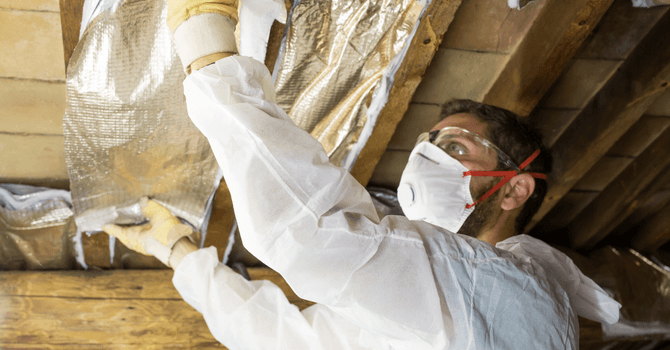
Considering that buildings can lose up to a quarter of their heat by way of their roofs, and on top of that cold air can seep through an improperly insulated roof, it's easy to gauge the importance of opting for well-insulated roofing panels.
Insulating a sloped or flat roof using the right panels will help you optimize the structure’s energy efficiency, reduce its carbon footprint, as well as save money, prevent heat transfer, and improve your overall comfort during the summer.
Since every building is unique, there are solutions more or less adapted to each situation, depending on the specifications of the roof in question and, of course, your budget.
Insulated Roofing Panels: Various Models
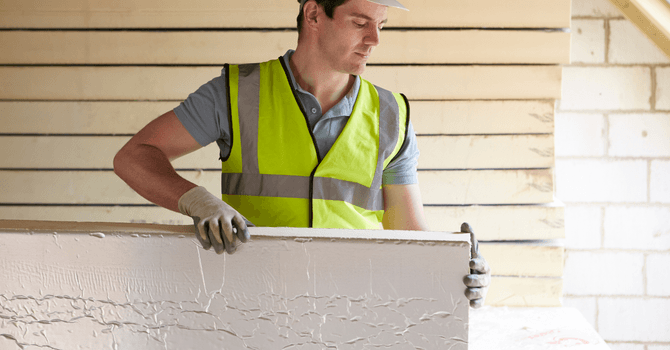
Source : Canva
Overview of different types of insulated roofing panels
PIR polyisocyanurate panels: These are made for both flat and sloped roofs, and this type of material is highly flame retardant, meaning its components were treated to withstand fire. However, installing this type of insulated roof panel can be tricky on solid structures and requires certain adjustments. Il will also necessitate foam insulation at the edges where the panels meet.
PUR polyurethane panels: This type of insulation is suitable for sloped or flat roofs. It already has a vapour barrier layer, making the installation of an additional vapour barrier layer on the surface of the roof unnecessary. However, correctly positioning the insulated panel is crucial: there should be no gaps between them. If so, add polyurethane foam where the panels appear to be vulnerable.
Mineral fibre insulation board: Mineral wool is suitable for flat or sloped roofs. It is made up of Rockwool, glass wool, and wood wool. Given its tendency to compress, mineral wool is less effective than PIR or PUR. Therefore, you'll need to increase the overall density to achieve the same degree of roof insulation as you normally would with the previously mentioned panels.
Overview of different types of metal panels
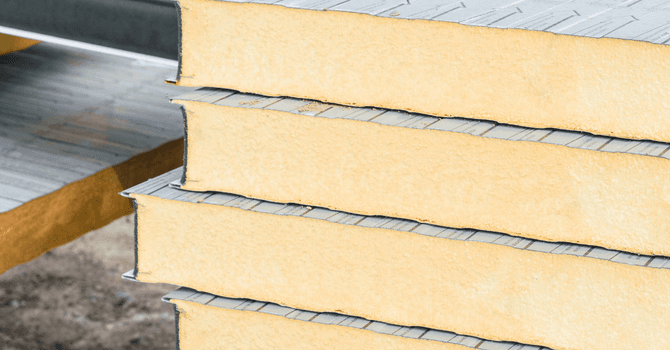
Source : Canva
Insulated metal steel panels: Suited for flat or sloped roofs. Steel metal panels are made of a non-load-bearing corrugated panel, which is then added to a hard thermal insulator, such as polyurethane, Rockwool, or glass wool. It's super easy to install, and these stand out on account of their ability to withstand mould and mildew growth. On top of that, they're considered to be a very good soundproofing material.
HR (HR3 & HR5) roof panels: More cost-effective than on-site assembled systems, these provide seamless thermal insulation and prevent any risk of interstitial condensation. These panels are very resistant and meet today's energy standards, unlike, for example, traditional roofing materials made from fibreglass. They're quick and easy to install, with unique, waterproof EPDM washers to secure the attachment to the standing seam while also preventing water infiltration.
Standing seam (SR2) roof panel: Given their maximum impermeability, these zinc panels are especially suitable for regions in Quebec where the climate is harsh. And, they're particularly suitable for rounded or intricately-shaped roofs.
A specific example of an insulation board: Isolex II
Isolex II is a closed-cell polyisocyanurate foam board, which is fully laminated to a heavy, durable, and dimensionally stable inorganic glass-coated panel. In Quebec, this roofing insulation board is available in various widths, thus offering thermal values ranging from R5.7 to 26.8. Its use is especially relevant for multi-layer, modified bitumen, and single-ply roofing systems. It's also available in several sizes.
Features & Advantages
High R-value: Polyisocyanurate is one of the best thermal insulators available on the market.
Dimensional stability: Isolex II has compressive strength, dimensional stability, and stable support panels that can withstand labour traffic during installation, can resist the weight of mechanical fasteners, and reduce thermal bridging.
Highly Compatible: Isolex II blends in perfectly with any type of roofing system, and is a key element in a fire-resistant roofing composition. It's also compatible with the adhesives and solvents generally used in construction.
Eco-friendly: Isolex II is a product that’s HCFC-free and safe for the ozone layer.
Furthermore, Isolex II boards have proven fire, compression, and moisture resistance. They’re fully approved by the Construction Code and are highly regarded by insurance companies, which offer cost-effective pricing to those who purchase them.
Bizolap Insulation Board: Type HR With Specifications
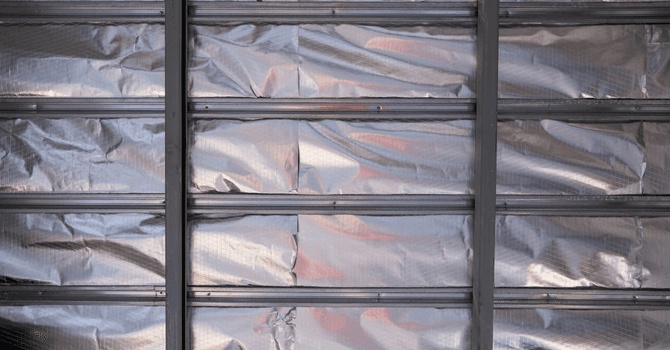
Source : Canva
Bizolap is a sloped, expanded polystyrene roof insulation board that’s shiplapped on four sides. It is designed to insulate and drain flat or low-slope roofs.
Features & Advantages
Monolithic panels: With up to 8" (203.2 mm) of thickness, this type of insulation board meets the required R-value for a residential home with just one layer.
Waterproof: Since closed-cell foam is impermeable, water can only penetrate the channels between the polystyrene cells, which are sealed together.
High dimensional stability: According to industry standards, expanded polystyrene is the best material in terms of dimensional stability. It guarantees the same efficiency in terms of impermeability over time.
Captive gas (98% air and 2% plastic): It is free of gasses that could harm the ozone layer. This formula makes the roofing insulation board lightweight while also maintaining its R-value.
Eco-friendly product: EPS (expanded polystyrene) is 100% recyclable and contains 10% recycled materials. It’s also locally made, thus the travel distance between the factory and the construction site is minimal.
Anti-mould: EPS is made from materials that don't support bacterial growth such as spores and fungi.
Meets high standards: Helps meet Novoclimat (in Quebec), EnergyStar (Ontario and Maritimes) and R-2000 (Canada) thermal insulation standards.
On top of that, Bizolap boards have 100% thermal resistance and a 35-year warranty (at no extra cost).
Cover image source: Micah Carlson - Unsplash
Get 3 quotes for your roofing project
RenoQuotes.com will put you in contact with 3 reliable contractors for your roofing renovation project. Fill in the form on our homepage (it only takes a few minutes), and you will receive quotes from trusted professionals.
Dial 1-844 828-1588 to speak with one of our customer service representatives.
Looking for something else?
Related articles
The latest industry news, interviews, technologies, and resources.

Cynthia Pigeon
•02 Aug 2024
Regardless of the type of material used to cover your roof, with time and exposure to the elements, grime can quickly build up and compromise the roof's functionality. Therefore, it's essential to clean your roof regularly to prolong its durability and maintain adequate waterproofing. Below are some tips on how to maintain a shingle roof.

Editorial Team
•02 Aug 2024
The shed has come a long way since it’s modest days of being a wooden box that holds gardening materials. Modern sheds have developed to host a variety of functions, aside from keeping landscaping tools clean and dry. Now, a shed can be turned into backyard haven, home-away-from-home, or a retro space to live out your hobbies.
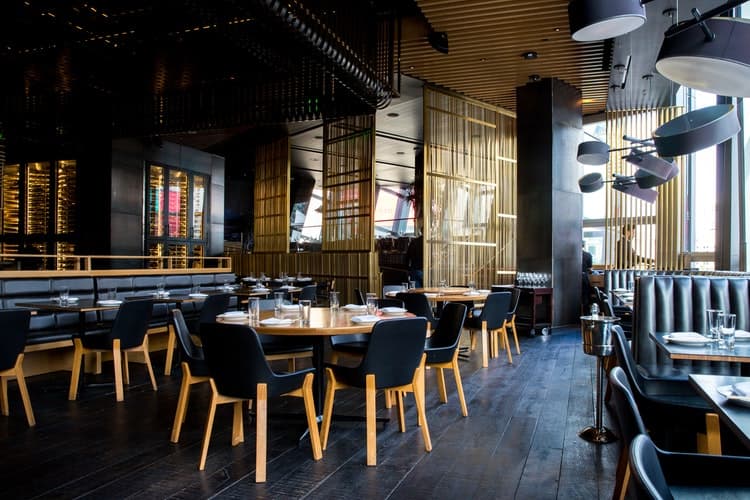
Editorial Team
•02 Dec 2024
If you're looking to improve the appearance of your commercial space to transform it according to your tastes and needs, you'll need to hire a contractor.

Editorial Team
•18 Apr 2024
Are you dreaming of a beautiful outdoor kitchen to unwind in the sun, inhaling the smells from your dinner cooking slowly on the barbecue? Before designing your new summer kitchen, you first have to establish a realistic budget. But, the question is, How much should you plan on spending for such a project?

Paul Riopel
•22 May 2024
Ontario, like many regions across Canada, is grappling with a pressing issue: a critical shortage of skilled tradespeople. As the demand for skilled labour continues to grow, various factors contribute to this deficit, ranging from demographic shifts to societal perceptions and immigration hurdles.